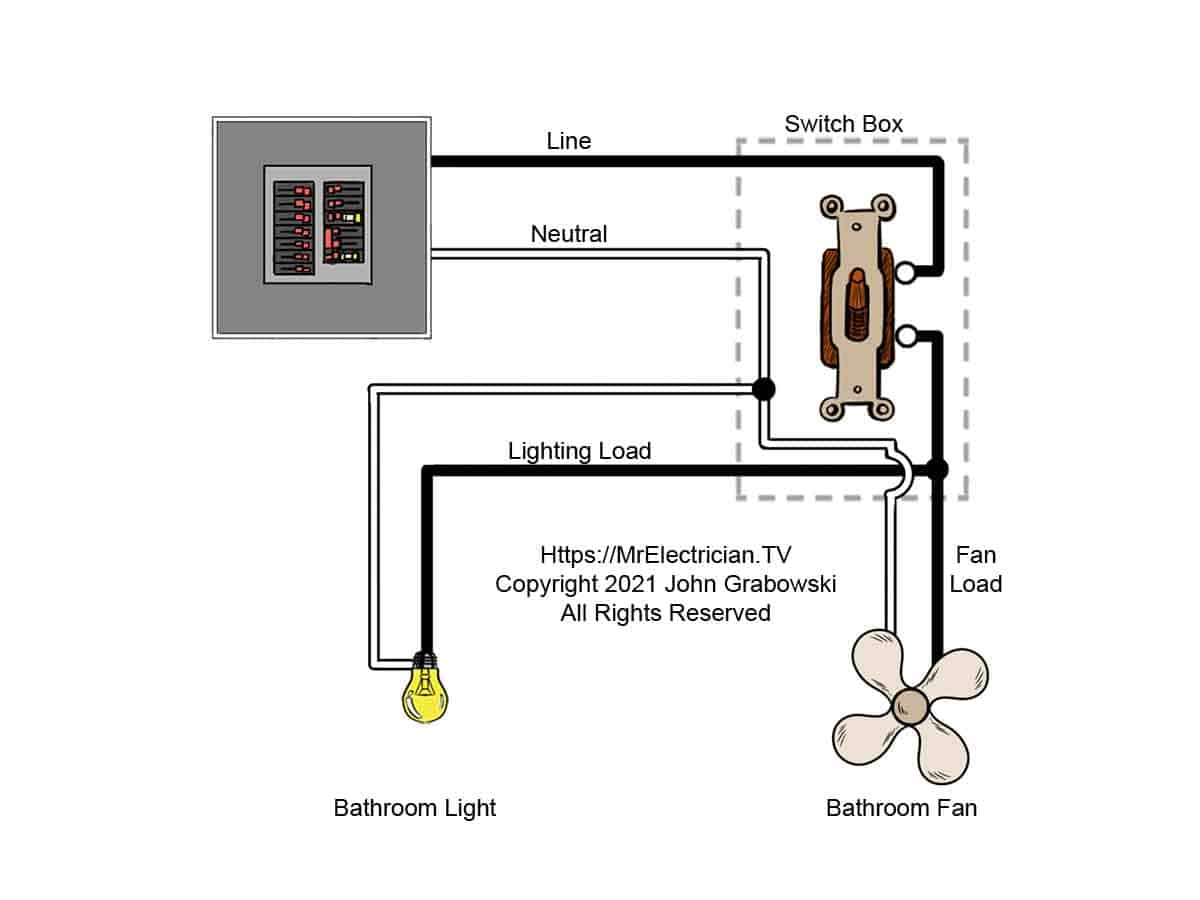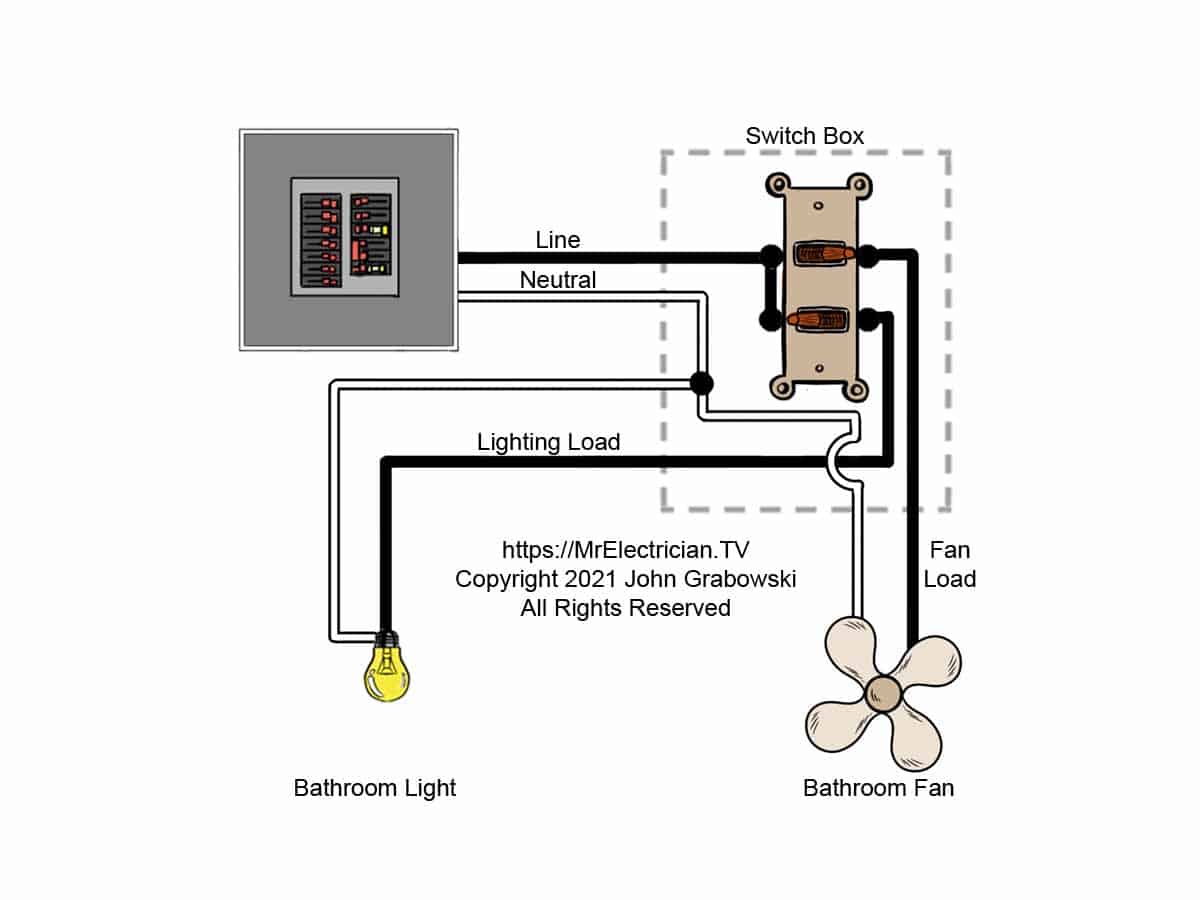Electrical Safety Precautions

It’s crucial to prioritize electrical safety when working with bathroom exhaust fans with lights. Before initiating any work, ensure the power is disconnected at the circuit breaker. This measure safeguards against potential electrical shocks or accidents.
Testing the Circuit
To verify the circuit is de-energized, utilize a voltage tester. This device detects the presence of electricity by illuminating a light or emitting a sound. Place the tester’s probes on the wires to determine if power is still flowing. If the tester indicates no voltage, it’s safe to proceed.
Personal Protective Equipment (PPE)
When working with electrical components, it’s essential to wear appropriate personal protective equipment (PPE) to minimize the risk of injury. This includes wearing gloves to protect your hands from electrical shocks and safety glasses to safeguard your eyes from flying debris or sparks.
Wiring the Exhaust Fan

Wiring a bathroom exhaust fan with light – Exhaust fans play a crucial role in maintaining a healthy and comfortable indoor environment, particularly in bathrooms. They help remove excess moisture, odors, and pollutants, preventing mold growth and ensuring proper ventilation. Different types of exhaust fans require specific wiring configurations to operate effectively.
Types of Exhaust Fans and Wiring Requirements, Wiring a bathroom exhaust fan with light
- Ceiling-Mounted Fans: These fans are installed directly into the ceiling and typically require hardwiring to an electrical junction box. The wiring involves connecting the fan’s wires (black, white, and green) to the corresponding wires in the junction box (black to black, white to white, and green to ground).
- Wall-Mounted Fans: These fans are mounted on the wall and require wiring to an electrical outlet. The wiring process involves connecting the fan’s plug to the outlet, ensuring a secure fit.
- Inline Fans: These fans are installed within the ductwork and require wiring to a separate electrical circuit. The wiring involves connecting the fan’s wires to the circuit’s wires (black to black, white to white, and green to ground).
Step-by-Step Wiring Instructions
Once you have identified the type of exhaust fan and its wiring requirements, follow these steps to connect it to the electrical wires:
- Turn off the power: Before starting any electrical work, it is essential to turn off the power at the circuit breaker or fuse box to prevent electrical shock.
- Identify the wires: Determine the wires in the junction box or outlet that will be used to connect the fan. In most cases, black wires are for live current, white wires are for neutral, and green or bare copper wires are for grounding.
- Connect the wires: Using wire nuts or electrical tape, connect the fan’s wires to the corresponding wires in the junction box or outlet. Ensure the connections are secure and insulated properly.
- Ground the fan: Connect the green or bare copper wire from the fan to the ground wire in the junction box or outlet. This step is crucial for safety and prevents electrical shocks.
- Turn on the power: Once all the connections are complete, turn on the power at the circuit breaker or fuse box. Test the fan to ensure it is operating correctly.
Wiring the Fan’s Light
If the exhaust fan includes a light, additional wiring is required. The light fixture typically comes with two wires, one for the light and one for the neutral. Connect the light wire to the black wire in the junction box, and the neutral wire to the white wire. Ensure all connections are secure and insulated properly.
Refer to the table below for a summarized overview of the wiring connections:
| Fan Type | Live Wire | Neutral Wire | Ground Wire |
|---|---|---|---|
| Ceiling-Mounted | Black | White | Green |
| Wall-Mounted | Black | White | Green |
| Inline | Black | White | Green |
| Light Fixture | Black | White | N/A |
Troubleshooting Common Issues: Wiring A Bathroom Exhaust Fan With Light

Wiring a bathroom exhaust fan with light can be straightforward, but occasional problems may arise. Identifying and resolving these issues promptly ensures optimal performance and safety.
Incorrect wiring or a faulty fan are common culprits behind malfunctioning exhaust fans. Troubleshooting involves checking for loose connections, faulty wiring, and defective components.
Loose Connections
Loose connections can disrupt the flow of electricity, causing the fan or light to malfunction. Check all wire connections at the fan, switch, and electrical box to ensure they are secure. Tighten any loose connections using a screwdriver or pliers.
Faulty Wiring
Incorrect wiring can prevent the fan or light from operating correctly. Verify that the wires are connected to the appropriate terminals on the fan, switch, and electrical box. Refer to the wiring diagram provided with the fan for guidance.
Defective Fan
If the fan is not operating despite proper wiring, it may be defective. Replace the fan with a new one of similar specifications. Ensure the new fan is compatible with the existing wiring and electrical system.
If troubleshooting does not resolve the issue, do not hesitate to contact a qualified electrician for assistance. They have the expertise and tools to diagnose and repair the problem safely and efficiently.
As the soft hum of the bathroom exhaust fan with light filled the air, I couldn’t help but think of the rustic charm of farmhouse home decor. Its cozy textures and earthy tones would complement the clean lines of the fan, creating a harmonious blend of practicality and style.
Returning to the task at hand, I carefully connected the wires, ensuring the fan and light would illuminate and ventilate my bathroom with effortless grace.
The bathroom’s exhaust fan with light is an essential part of any home, ensuring proper ventilation and a comfortable atmosphere. Its wiring requires careful attention, but it’s a task that can be tackled with a little patience and the right tools.
However, if you’re looking to enhance the overall aesthetic of your bathroom, consider exploring high quality wallpapers that can add a touch of elegance and sophistication to your space. Once you’ve selected your desired wallpaper, you can return to the wiring project and complete the installation of your bathroom exhaust fan with light.